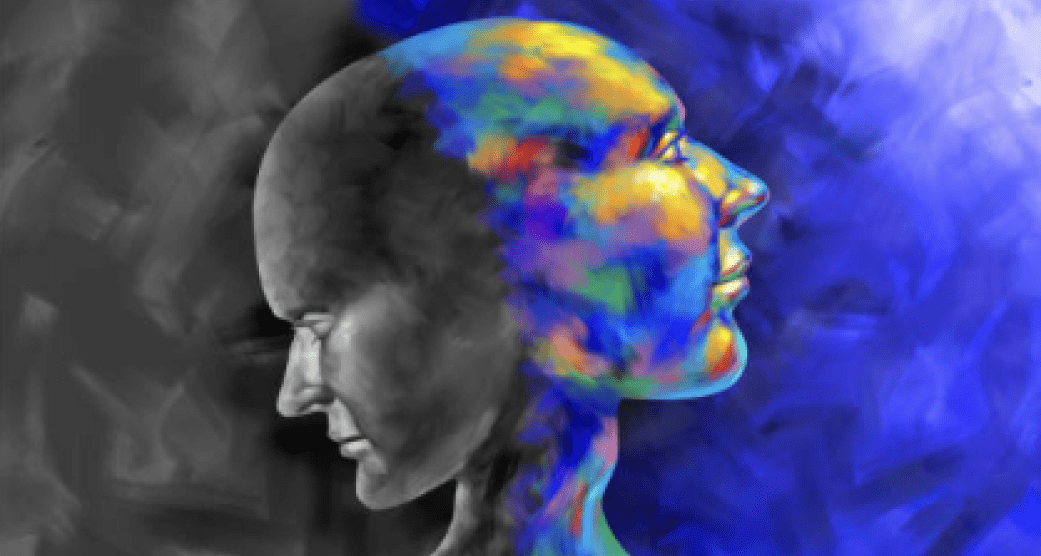What is Comorbidity?
This article is based on scientific evidence and clinical experience, written by a licensed professional and fact-checked by experts.

Posted: October 5, 2023
Estimated reading time: 11 minutes
“In the beginning there was the heaven and the earth. And the earth was without form, and void; and darkness was upon the face of the deep. And the Spirit of God moved upon the face of the waters.” -Genesis 1: 1-2 KJV
Many of us have heard these scriptures from time to time opening our hearts to realize that heaven exists separate from earth. Our lives are constantly aging just like the earth while our everlasting heaven awaits the very moment of our arrival. Even though the earth is separate from Heaven do you realize they co-exist but are quite different? Have you considered that just maybe what you are dealing with right now stems from more than one place or condition? Have you ever heard of comorbidity?
Comorbidity is the suffering of the simultaneous presence of one or more diseases or mental conditions. Have you considered that your or someone’s serious mental illness could be related to their substance abuse disorder, and the same goes for an individual’s substance abuse disorder which could be related to their current mental condition? These conditions can co-exist, and it is very possible to experience either condition after one has been maintained therapeutically or by medication. Statistics have shown that individuals that suffer from a serious mental illness do have a greater chance of having a substance abuse disorder. However, that does not mean that an individual with a substance abuse disorder will not eventually also come down with a mental illness. In either case, chances are high when comorbidity is present. Many times clinicians misdiagnose issues due to subclinical symptoms even though subclinical symptoms can prompt drugs us. Subclinical symptoms are behavioral, or emotional problems that are not considered severe enough for diagnoses. Therefore, it is imperative to ask yourself if it is possible that my condition could be comorbid, also known as dual diagnosis.
Comorbidity (Dual) Diagnosis
Dual diagnosis does not discriminate by gender, age, or ethnicity. Unfortunately, adolescents with serious behavioral problems have been found to be seven times more likely to experience a substance abuse disorder in life. Substance abuse disorders complicate almost every aspect of care for individuals that suffer from a mental health condition. However, overlapping genetic vulnerabilities, predisposing genetic factors, may make a person more susceptible to both addiction and other mental disorders or to have higher secondary risk factors once they first appear. It is vital you consider these statements when asking questions about your own situation or someone else’s that you love dearly. Overlapping environmental triggers such as stress, trauma (sexual or physical abuse), and early exposure to drugs are common environmental factors that can influence the development of addiction and mental illnesses. You must pay close attention to your current conditions and deeply consider the ramifications of not handling concerns of dual diagnosis.
To narrow down this understanding we must look at the three main pathways that can contribute to the comorbidity between substance abuse disorders and mental illness. First, common risk factors can contribute to both mental illness, substance abuse disorders, and addiction. This is any behavioral, heredity, environmental, or other consideration which increases your risk to a mental illness or abusing substances. Here are some examples such as sociopathy, also known as antisocial personality disorder, which is a mental illness in which a person consistently shows no regard for right and wrong and ignores the rights and feelings of others [www.mayoclinic.org]. An example of a substance abuse disorder or SUD for short is a medical condition that is defined by the inability to control the use of a particular substance (or substances) despite the harmful consequences [American Psychiatric Association. (2020, December)]. According to the National Institute on Drug Abuse, addiction is defined as a chronic, relapsing disorder characterized by compulsive drug seeking and use despite adverse consequences. This term addiction as used in this article is equivalent to a severe substance use disorder as defined by the Diagnostic and Statistical Manual of mental Disorders, Fifth Edition [DSM-5, 2013]. As you can see mental illness, substance abuse disorder and addiction are different conditions an individual could deal with in life. Furthermore, mental illness may contribute to substance abuse and addiction.
Just one example in this circumstance is when an individual starts to self-medicate through a substance such as alcohol to suppress their feelings of depression. This then can turn into a case of disease when the individual requires the use of alcohol to suppress their depression, thus causing the events of addiction to alcohol. Another case where mental illness may become a co-occurring condition is when an individual suffers from substance-induced disorder which is characterized by a prominent and persistent disturbance in mood that is judged to be the result of drug abuse, a medication, or toxin exposure. This psychotic disorder symptoms can be traced to the starting or stopping of the use of alcohol or a drug. Through this process the individual experiences psychotic episodes just when using or when not using [www.sheppardpratt.org]. This disorder is even possible when in recovery from a substance abuse disorder. This is a common result of when substance abuse and addiction can contribute to the development of a mental illness. Does this mean that if you have an addiction to a substance that you may have a mental condition?
The answer is YES. Addictions change the brain in fundamental ways, disturbing an individual’s normal hierarchy of needs and desires. Substituting new priorities connected with procuring and using drugs. This behavioral change in many cases causes compulsive disorders in an individual weakening their control impulses, despite the negative consequences, which are hallmarks for a mental illness. This means that families with a member suffering with dual diagnosis may experience twice the problems that other families manage when dealing with just either a mental illness or substance abuse disorder. Studies show that half the individuals that suffer from a mental illness also have a substance abuse problem. Furthermore, more than half the individuals with a substance abuse diagnosis also have a diagnosable mental illness. However, this does not take away from the fact we love these individuals and want to provide them with the best care.
The Correct Approach
Families may feel angry at the person and blame them for being foolish and weak-willed, but it is vital to realize that mental illness and substance abuse are diseases that the person cannot take control of without help. Families many times do not realize that our bodies are influenced through chemical and hormonal reactions which cause physical and psychological dependencies. When this becomes altered, a behavioral response occurs both mentally and physically resulting in a procedure called reinforcement which is an event followed by a consequent event such that the behavior is then more likely to be repeated. For example, the behavior of taking a drug may be reinforced by the effect of the drug, which in could result in the possibility of these events becoming a disease within the body. The therapeutic goal in treatment then focuses on the ability to become, as close as possible, to abstinence knowing that when the disease is on set total abstinence may not be achievable but instead goals are made to maintain sobriety as best as possible.
Therapists at MyCounselor.Online understand that mental illness and substance abuse are biologically and physiologically based, as well as some cases spiritually based. The goal when dealing with a dual diagnosis is to first be aware that the individual has one or more underlining conditions. Many times, individuals with comorbidity do not respond to simplistic advice which results in extensive misdiagnosed therapy, medications, and relapsing due to the lack of awareness with their condition. A mental illness treatment program is and can be very different than a substance abuse treatment program. Therefore, it is vital to become aware of the true condition that is present. Without proper care and treatment in place individuals usually feel that their therapy or medication is not helping their condition. This results in them feeling defeated and that no one understands what they are going through.
The better approach to managing a dual diagnosis is treating both disorders at the same time. Studies show that when mental illness and substance abuse are treated by the same treatment team, psychotic episodes and suicide attempts decrease. Helping with the patient’s denial simultaneously which is why many comorbidity patients do not fit in most Alcoholic Anonymous or Narcotics Anonymous groups. Developing a positive social network and safe therapeutic environment is key to managing the effects of a patient’s comorbidity. Many institutions fail to understand that these special patients require greater care than the others that do not suffer from a dual diagnosis. Unfortunately, the norm is to only treat the present case and not address the secondary conditions that are present or will be present in time. The question then comes down to do I or does someone I love have comorbidity? Before, we diagnosis the factors that warrant dual diagnosis we first need to understand the difference between substance abuse disorders and mental illness.
As mentioned above mental health professionals know that comorbidity is both biologically and psychologically based. When it comes to substance abuse disorders individual’s brains get influenced by a substance which distorts the neurons in how they send, receive, and process signals throughout the body. In short, the usual areas of the brain that are influenced are; Basal Ganglia, Extended Amygdala, and Prefrontal Cortex. The Basal Ganglia is the part of the brain which is the reward circuitry. When drugs enter this part of the brain; they over-activate the circuitry resulting in the drug high effect. Through excessive substance use this area of the brain becomes less sensitive resulting in the drug effects to be felt less.
The Extended Amygdala is the area of the brain which plays a role in stressful feelings like anxiety, irritability, and unease which is where individuals feel the withdraws of the drug use. However, through substance abuse this area of the brain becomes overly sensitive resulting in individuals needing to continue substance abuse in order not to feel the negative effects of the withdrawal from drug use. Finally, the Prefrontal Cortex is energizing the ability to think, plan, solve problems, make decisions, and exert self-control over impulses. This is also the last part of the brain to mature, making teens most vulnerable to substance abuse disorders.
This part of the brain balances the circuits of the Basal Ganglia and the Extended Amygdala. Making an individual with a substance use disorder seek the drug compulsively with reduced impulse control. However, there are drugs like opioids that disrupt other parts of the brain such as brain stem, which could cause respiratory failure and death. Unfortunately, it is still poorly understood whether substance abuse drug highs produce pleasure or euphoria. For instance, the neurotransmitter dopamine was known for an extent of time by scientists to cause euphoria, but with greater understanding now scientist realize dopamine has more to do with getting us to repeat pleasurable activities than with producing pleasure directly. Understanding that a healthy brain identifies and reinforces beneficial behaviors, such as eating, socializing, and sex is key to understanding comorbidity. Which is why dopamine is vital in understanding the biological basis in comorbidity cases due to its enforceability that it teaches the biological needs of the bodies euphoric state. Resulting and implying physiological dependence.
The First Steps Toward Treatment
The first step in treatment is a careful assessment of the possibility of comorbidity. This is usually very difficult because symptoms of one disorder can mimic the symptoms of the other. Therefore, it is vital to conduct a comprehensive assessment to reduce misdiagnosis and a proper treatment program. The treatment program is essential to comply with the individuals who require behavioral therapies and medication, which must be tailored specifically to the combination of disorders and symptoms. The key to a patient’s health depends on the awareness of the clinician. No single patient treatment program will be the same and clinicians will need to create a comprehensive treatment plan per individual they become aware of that has a comorbidity diagnosis. Furthermore, in my upcoming articles I will discuss in detail specific substance abuse disorders and mental illness conditions which are commonly misdiagnosed due to overlapping symptoms.
“And God said, Let there be lights in the firmament of the heaven to divide the day from the night; and let them be signs, and for sessions, and for days, and years: and let them be for lights in the firmament of the heaven to give light upon the earth: and it was so.” -Genesis 1: 14-15 KJV
Back to topThis article is based on scientific evidence and clinical experience, written by a licensed professional and fact-checked by experts.
About the Author

Nathaniel Nevedal
Nathaniel Nevedal is a certified counselor at MyCounselor. He is an Accredited Life Coach (ICF) while also working on becoming a Licensed Chemical Dependency Counselor (LCDC) in the state of Texas.
Learn More About NathanielShare this article
View more articles

Navigating Conflict and Reconciliation with Adult Children: Practical Tips for Parents
By: Danielle Schaefer







